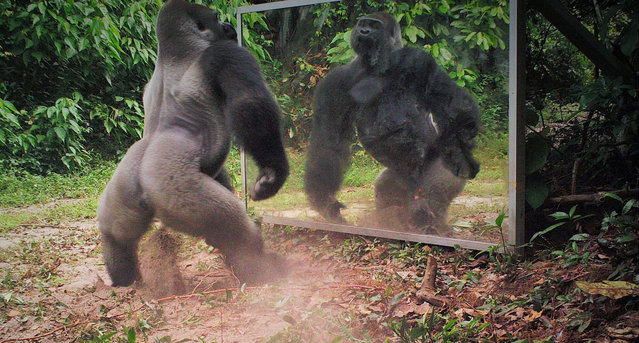
Camera trapper Xavier Hubert-Brierre put this large mirror on the side of a road through the jungle in Gabon and left a camera there to record how the animals would respond to their own reflections. A silverback gorilla thought it was seeing another silverback and responded by trying to scare off the potential challenger… (Photo by Xavier Hubert-Brierre/Johns Hopkins University Press)
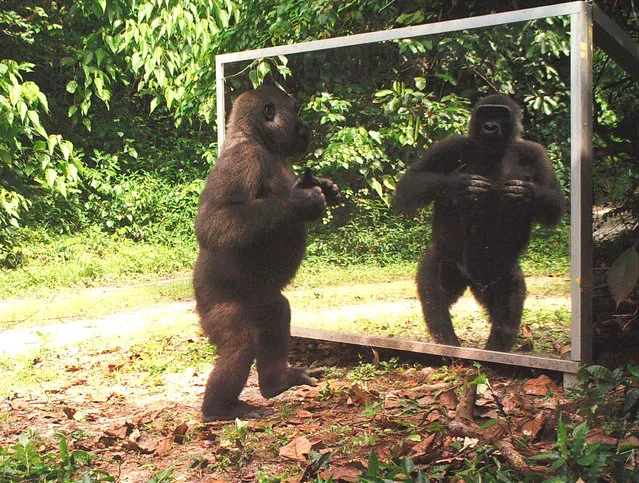
… A younger male gorilla saw a playmate in his own reflection and walked up to kiss the mirror. (Photo by Xavier Hubert-Brierre/Johns Hopkins University Press)
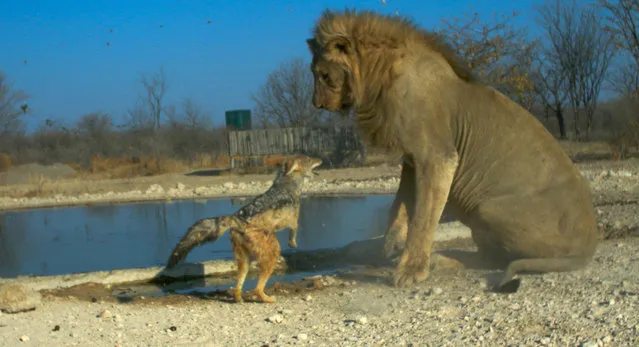
A surprised lion looks down on an overenthusiastic jackal in Namibia’s Ongava Game Reserve. Jackals are typically a nuisance to lions, stealing scraps from the larger carnivore’s kills. This jackal’s aggressiveness suggests that it might have rabies. (Photo by Ongava Game Reserve/Johns Hopkins University Press)
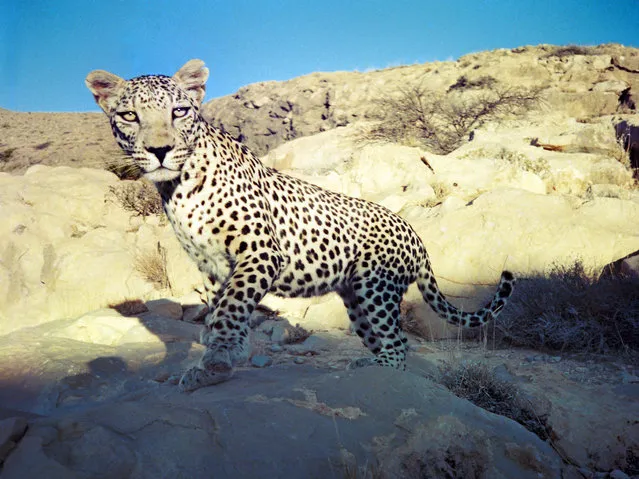
Much of the early research using camera traps targeted wild cats like this leopard in Yemen. Scientists continue to learn more about these species as the images accumulate and are used to ask scientific questions about the secretive lives of the wild cats. (Photo by David Staton/Johns Hopkins University Press)
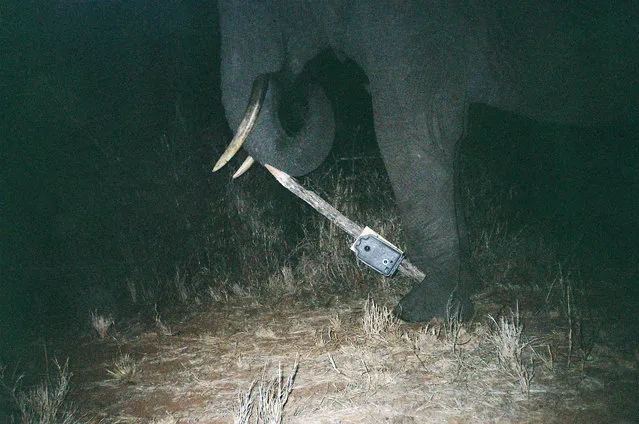
An elephant vandal is caught on one camera as it tips over the post holding up another in a paired set. (Photo by T. O'Brien/M. Kinnaird/Johns Hopkins University Press/WCS)
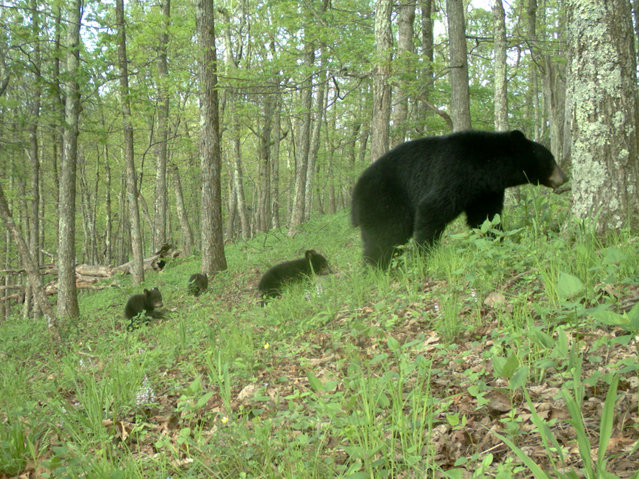
Black bears are found in the wilder parks of Virginia, where they are usually a relatively uncommon species. The exception is Shenandoah National Park, where one can photograph bears nearly as easily as white-tailed deer. At all sites, bears avoided trails with the most human traffic. (Photo by eMammal/Johns Hopkins University Press)
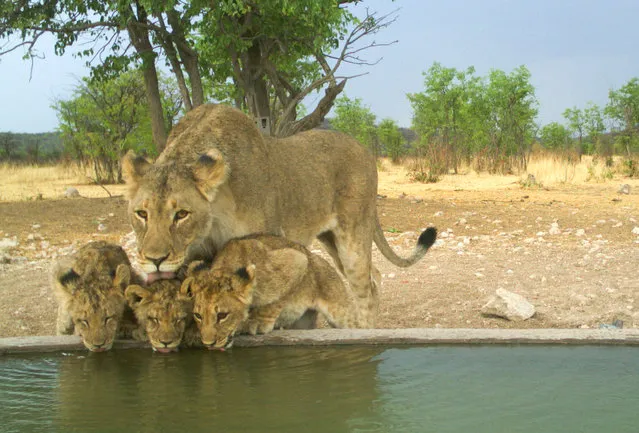
A female lion brings her cubs to drink from a water hole on a ranch in Namibia. Males will protect their own offspring but are notoriously brutal to any cubs not related to them. This can lead to infanticide, which is most common when new male lions take over a pride of females after vanquishing the previously dominant males. The reproductive physiology of lions encourages this rogue behaviour because females quickly become reproductively receptive once their cubs are gone. New males in a pride are impatient to breed, knowing that they too could soon be overthrown. (Photo by Ongava Game Reserve/Johns Hopkins University Press)
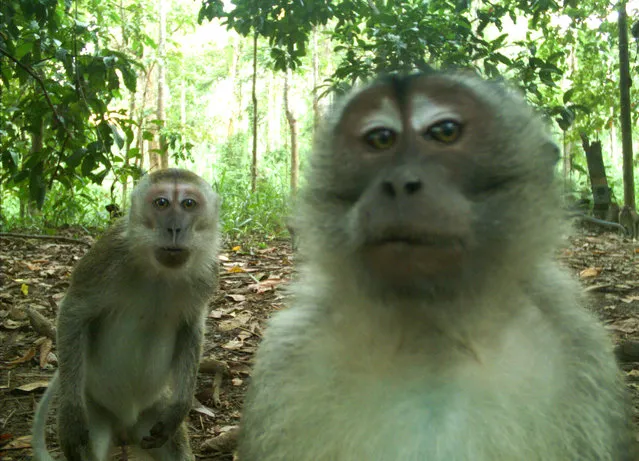
Long-tailed macaques are a common species in south-east Asia and live a bold and curious lifestyle. Although about half of their diet is fruit, they are always on the lookout for a small insect or lizard to pounce on. (Photo by Benoit Goossens/Johns Hopkins University Press)
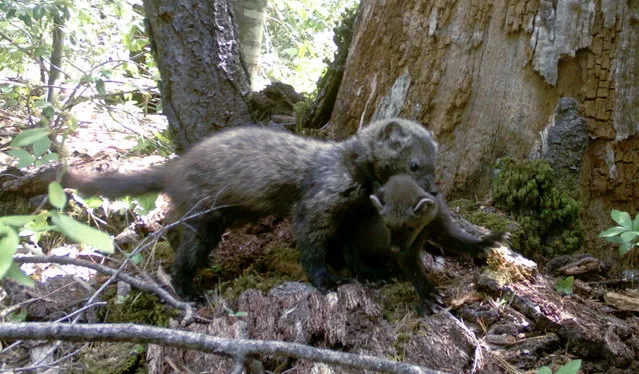
Biologists radio-tracked a female fisher to a big tree and suspected that she had a litter high up in the canopy, probably in a small tree hole. They placed this camera trap at the bottom of the tree and eventually recorded her moving her kits. Fisher mothers typically move their kits to new dens three to six times a season. (Photo by California Fisher Translocation/Johns Hopkins University Press)
03 May 2016 13:04:00,
post received
0 comments
